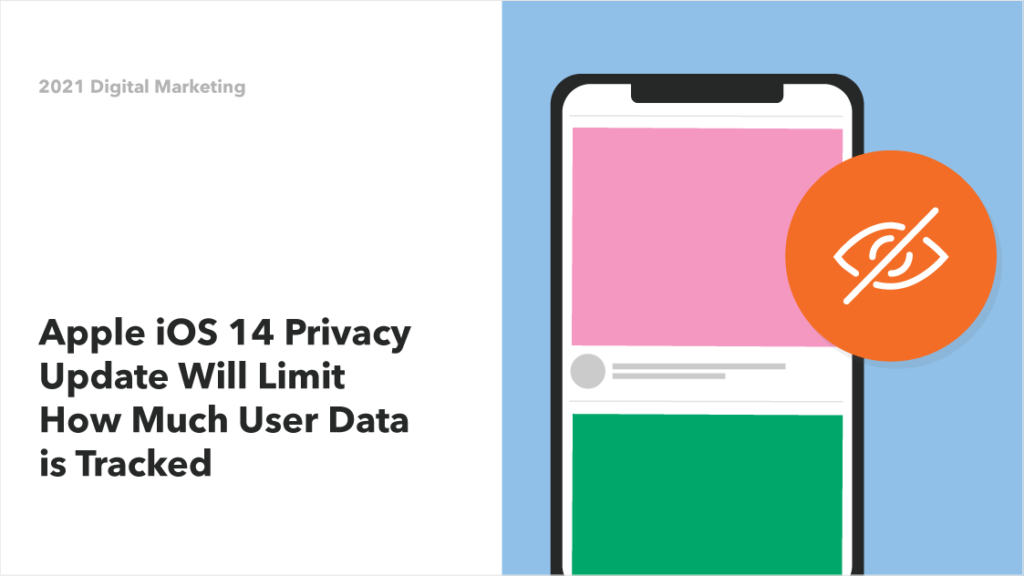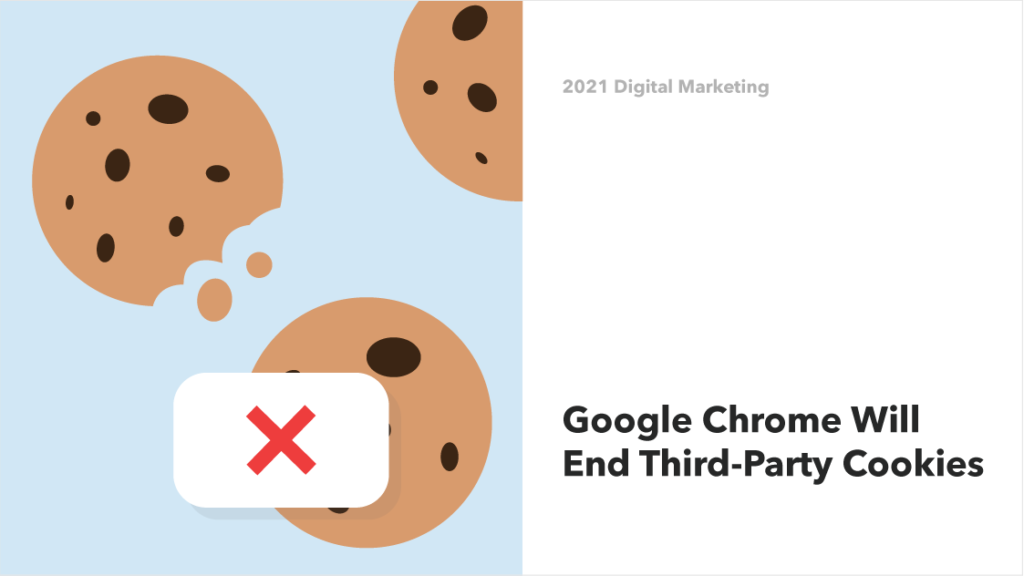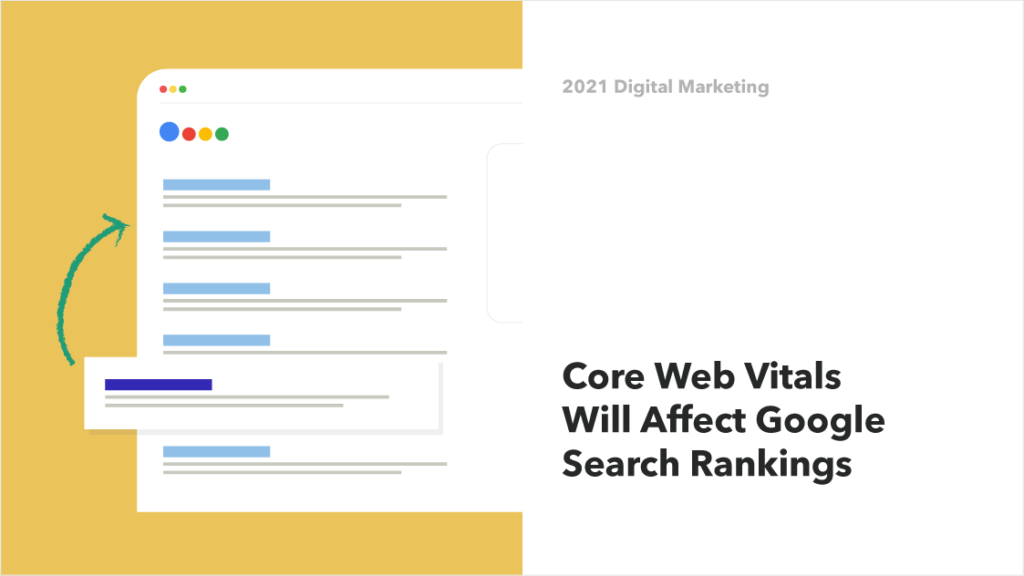Digital Marketing & Data: A Change is Coming—Soon
A sea change is coming.
Several tech platform updates coming in the next few months will create drastic differences in how digital marketing teams work and what they’re able to do, from ad targeting and retargeting to SEO performance.
When I talk with other digital marketers, the constant learning and industry advancements are usually what people say they love most about their jobs. I say that too—digital marketing keeps you on your toes. Digital marketing in 2021 will be full of industry shifts, and marketers need to be prepared for everything headed our way.
Here’s what to expect.

Apple iOS 14 Privacy Update Will Limit How Much User Data is Tracked
When Apple releases its next iOS 14 privacy updates, which the company has stated will roll out in early 2021, all apps will be required to issue disclaimers to users requiring they either opt-in and give the app permission to track their activity, or opt out.
It’s a move intended to help people guard their privacy. On the other side, many digital marketers will have a harder time targeting audiences and personalizing ads.
Facebook is in an uproar, as Apple’s changes will deeply impact the company’s ads platform. (While the iOS 14 updates will primarily affect Facebook’s app and app advertisers, ads served on the Facebook website will likely also be affected.)
In reaction, Facebook has made a few modifications of its own. You can find specific information about all of the changes and how they will affect various advertisers in Facebook’s Business Help Center, but here are a few things to keep in mind no matter your brand or Facebook ads strategy:
Conversion events will be limited. Advertisers will be limited to eight conversion events per website domain. That includes events tracked by your Facebook Pixel and custom conversions, meaning the way you track your marketing funnel objectives might need to change.
Attribution window options will change. The new default will be a 7-day click attribution window, and 28-day click-through, 28-day view-through and 7-day view-through windows won’t be supported.
Targeting abilities will be limited. With more people opting out of tracking on iOS 14, the size (and accuracy) of your audiences will probably decrease.
How to prepare for the Apple and Facebook updates:
Expect rockiness ahead. With so many adjustments on Facebook’s ad platform, you’ll likely start seeing major shifts in your analytics, from audience sizes to conversion rates. Understand now that your Facebook Ads performance is likely to change—and probably for the worse.
Optimize your Facebook Ads account. Even according to Facebook, a lot of the details about what advertising on the platform will look like in the future are still up in the air. However, there are some actions you can take now to make sure your account is ready for the changes.

Google Chrome Will End Third-Party Cookies
Google Chrome is also changing the way it tracks user activity. While other browsers like Safari and Firefox had already blocked third-party cookies, Google Chrome is the most-used browser in the world—so the change will have a bigger impact.
Cookies are a major part of digital marketing. First-party cookies are those owned by and stored on the website you’re visiting. A first-party cookie might remember your login info and allow that company’s digital marketers to see which pages you’ve viewed. Third-party cookies are created by sites other than the one you’re visiting, to serve you ads after you’ve moved on to the next site.
Google plans to have third-party cookies fully phased out by 2022.
Just like Apple’s updates, the end of third-party cookies on Google Chrome could drastically change how digital ads work. However, Google says it’s working to create a better alternative that would prevent disruption. Which brings us to…
How to prepare for the end of third-party cookies on Google Chrome:
Build up your first-party data and internal lists. Third-party cookies are going the way of MySpace, but first-party cookies will still be around. Now’s also a great time to clean up customer lists and encourage leads and customers to share their information (ahem, email marketing lives to see yet another day) so you can keep in touch.
Start playing in the Sandbox. Google has introduced the Privacy Sandbox, an alternative way for advertisers to deliver ads with anonymized signals instead of cookies. The Privacy Sandbox is still being created (with input from advertisers, publishers and tech companies) but you can start brushing up on the basic concepts now.
Core Web Vitals Will Affect Google Search Rankings
Oh, Google.
Google is responsible for another big shift coming to the digital landscape this spring. Core Web Vitals, three page experience signals that quantify the experience of interacting with a website, will start being included in Google Search rankings.
The three signals are loading (large contentful paint or LCP), interactivity (first input delay or FID) and visual stability (cumulative layout shift or CLS). They’ll join Google’s existing search factors, like mobile-friendliness and HTTPS security. We won’t get into the nitty gritty here, but basically, the formula Google uses to evaluate a website and determine where that site ends up in search rankings, is changing to include these three new signals.
That means that some mornings over the next few months, many marketers, developers and business owners might wake up to find their website has dropped a few spots on Google.
Your SEO strategy is about to get more complex.
How to prepare for Core Web Vitals:
Talk to your web developer. They’ll need to read up on Core Web Vitals (if they haven’t already) and start outlining potential changes your site might need.
Audit your site. Learn how it currently scores on things like LCP and CLS to determine where to focus your efforts. How? Open up your site in Chrome, right click and choose “Inspect.” From the menu at the top of the window, choose “Lighthouse” and generate the report.
Digital Marketing in 2021
The first step in solving any problem is recognizing it exists, right? So if you’re a digital marketer freaking out right now, don’t worry—you’ve just completed the first task in tackling these changes.
In addition to the steps above, you can lean on your marketing agency for help readying your site for Core Web Vitals, adjusting your ads strategy and finding other ways to reach potential leads and generate sales.
And remember, marketers across the globe will all be facing the changes together, at the same time. By testing new strategies and tactics, soaking up knowledge, and staying agile, you can weather the storm.




